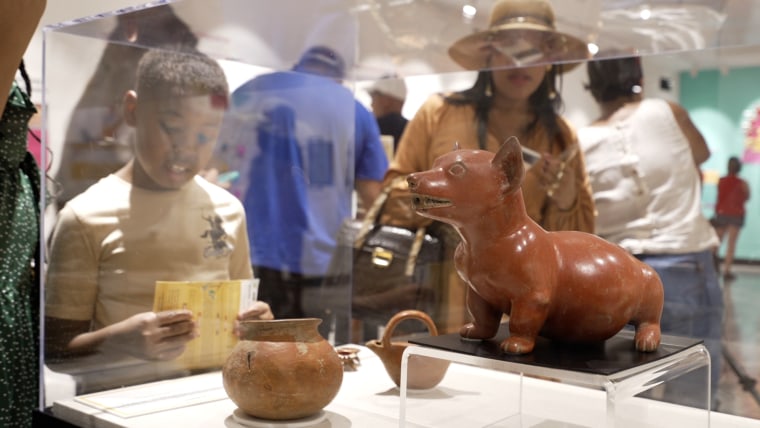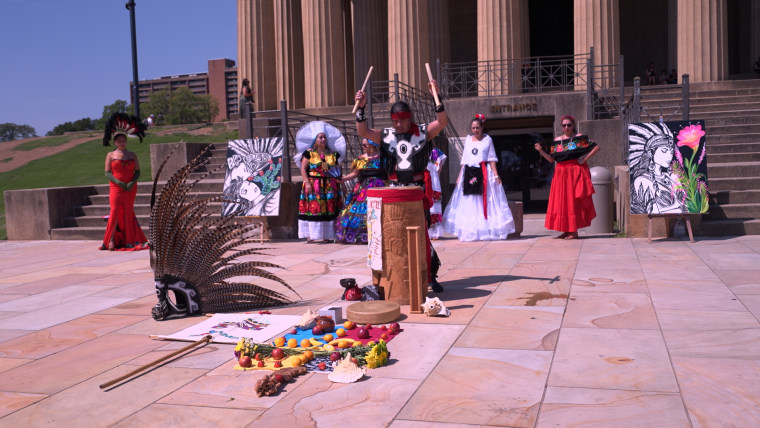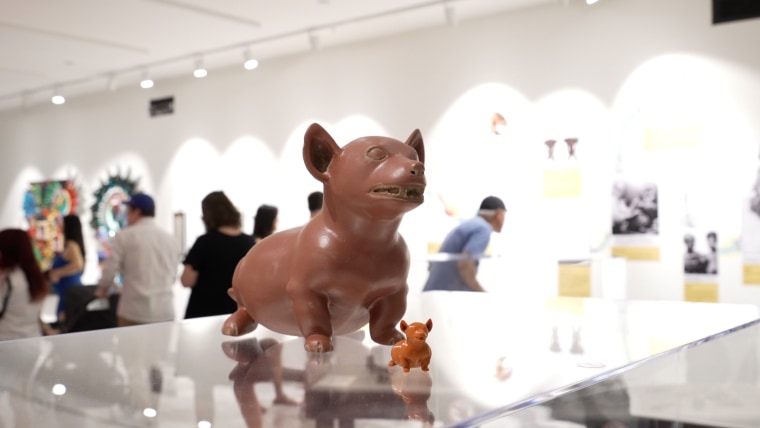NASHVILLE, Tenn. — This city’s renowned Parthenon Museum is bidding farewell to one of its prized collections: This month over 250 Mexican artifacts — including ancient tools, instruments and clay sculptures dating back more than 500 years — are being returned to Mexico City, where they will eventually be put on display.
The prized artifacts have been at the Parthenon since the late 1960s, when an Oregon doctor donated them for tax deduction purposes. Farmers in western Mexico had sold them for cheap, thinking they were junk found on their farms.
“Mexico has had a lot of their history removed in this way,” said Bonnie Seymour, the assistant curator who led the museum’s repatriation effort.
“It’s just the responsibility of all museums to return that,” she said at a celebration to mark the repatriation, where traditional dances and other cultural touchstones honored Mexico’s history. “We can’t fix the holes that are lost, because a lot of context is lost. But we can give it back to where it belongs.”

Seymour introduced the artifacts to visitors one last time as part of “Repatriation and its Impact,” an exhibition exploring the global debate around repatriation. The exhibit’s walls detail famous repatriation cases, including the Parthenon’s namesake in Athens, Greece, where politicians continue to call on the British Museum to return ancient sculptures stolen two centuries ago.
“Museums aren’t evil institutions trying to keep people’s things away from them,” said Seymour, adding that several museums have contacted her asking for help to return some of their collections. “We just don’t know what to do, and we’re trying to figure it out.”

‘Recovering a piece of memory’
The Mexican Consulate in Atlanta is collecting the artifacts. Consul General Javier Díaz de León said they’re a small part of the more than 13,000 artifacts the current Mexican administration has recovered through repatriation. Once the artifacts arrive in Mexico, staff members at the National Institute of Anthropology and History will decide on their permanent home.
“By recovering these pieces, we’re recovering a piece of a memory,” de León said. “That way, people who live in Mexico have direct contact with pieces that represent how their ancestors live, where they come from and part of our history.”
Nashville, in turn, will be able to retain the memory of what was once a staple of its collection; 3D prints of several of the artifacts are now part of the museum’s educational collection.

Seymour said she hopes they’ll help teach visitors about the nuances of repatriation.
3D paintings featuring a giant feathered serpent, a bronzed Aztec warrior and a colorful painting of a Mexican hairless dog surround the pre-Columbian artifacts in the gallery — drawing from them for inspiration. They’re the work of Jose Vera Gonzalez, a Nashville artist who immigrated from Michoacán, Mexico. He calls Seymour his “hero.”
“My big inspiration is the Mexican story and ancestral history,” Gonzalez said. The artifacts remind him of Mexico’s long history of artists and of the respect and love he has for his country, he said.

For the Parthenon’s visitors, it’s a bittersweet goodbye to artifacts they’ve come to remember as a staple of the museum’s collection.
“It’s nice to see the culture being shared worldwide,” said Paulina Alvarado, a Mexican student in Nashville who participated in the repatriation celebrations. “[But] having permission from that culture and from the people to be able to share that culture with others — that’s important to me.”
For more from NBC Latino, sign up for our weekly newsletter.

إرسال تعليق